The 2016 Opposition of Mars – An Observer's Guide
By: Brian Ventrudo, Contributing EditorDiscuss this article in the forums
May 17, 2016One of the five bright planets visible to the unaided eye, Mars has perplexed and tantalized stargazers since antiquity. Its ochre hue, a consequence of iron-oxide in its surface sands, prompted classical astronomers to name the planet after the Roman god of war, and its dark and changing surface markings inspired early telescopic astronomers to speculate about the presence of life on the planet. The coming weeks offer you the best chance in the next two years to see Mars with a small telescope, so here's a guide to help you get a good view of the Red Planet in 2016.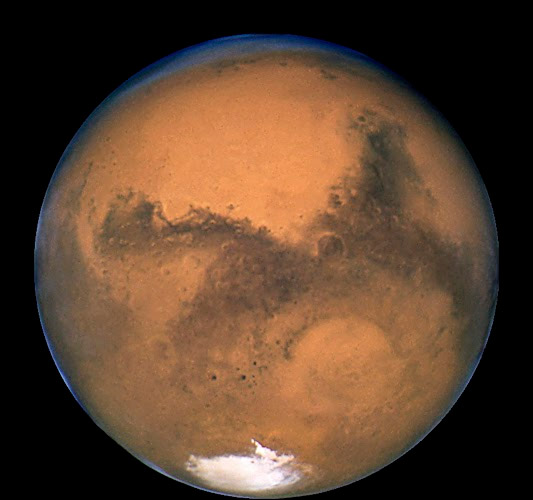 Fig 1: Mars imaged by the Hubble Space Telescope during its opposition of 2003. Photo credit: NASA/HST.
Fig 1: Mars imaged by the Hubble Space Telescope during its opposition of 2003. Photo credit: NASA/HST.1. The Best Time to See Mars in 2016
Mars is usually a small and disappointing sight in a small telescope. But once every 780 days, or about two years and two months, Earth catches up to Mars in its orbit and makes a close approach when both planets are on the same side of the Sun. Mars then appears in our skies directly opposite the Sun, rising in the east as the Sun sets in the west. This alignment, when Mars is closest to Earth and appears largest, is called an opposition. This year Mars reaches opposition on May 22, 2016. The several weeks before and after opposition, called an apparition, are the best time to see the planet. Because of Mars' elliptical orbit, not all oppositions are equal. During the famous opposition of 2003, when Earth and Mars were just 34.7 million miles apart, the disk of the planet grew to a diameter of 25", the largest Mars has appeared from Earth in 60,000 years. During the opposition of 2012, on the other hand, Mars never got closer than 62 million miles and appeared just 13.9" across. At this year's opposition, the planet comes with 46.5 million miles of Earth and spans about 18.6". That's a respectable opposition and the best since 2005, but even at its closest this year, Mars appears just 1/3 the size of Jupiter at its opposition in March 2016.
2. Where to See Mars in 2016
During its 2016 apparition, Mars appears in a starry section of the sky in and around the constellations Scorpius and Libra near the southern extreme of the ecliptic. For observers in the northern hemisphere, that means Mars will rise in the southeast around sunset in late May and lie low in the thick air over the southern horizon by midnight in late May and through mid June. To get the best views of the planet, you need nights or even just fleeting moments of very steady seeing. Observers in the southern hemisphere are much more fortunate because Mars is nearly overhead after midnight where the seeing is, on average, much better.
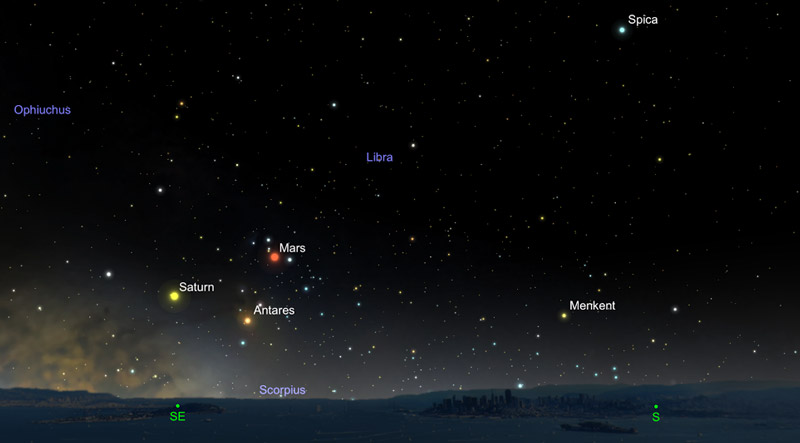 Fig 2: The location of Mars at opposition on May 22, 2016, looking southeast a few hours after sunset as seen from the northern hemisphere. The planet straddles the border between the constellations Scorpius and Libra. From the southern hemisphere, Mars and the grand constellation Scorpius are directly overhead in the late evening hours. Created with SkySafari.
Fig 2: The location of Mars at opposition on May 22, 2016, looking southeast a few hours after sunset as seen from the northern hemisphere. The planet straddles the border between the constellations Scorpius and Libra. From the southern hemisphere, Mars and the grand constellation Scorpius are directly overhead in the late evening hours. Created with SkySafari.You can't miss the planet during this apparition. With an unmistakable red-orange light, Mars will reach magnitude -2.1 at opposition, far brighter than any star and about the same brightness as the planet Jupiter, which lies low in the western sky in late May and early June Mars will far outshine even Antares, the brilliant red supergiant star at the heart of the constellation. Antares name derives from the Greek ant Ares, which means "equal to Ares", the Greek name for the god Mars. From August 22-27, 2016, when Mars is well past opposition but still brilliant, the planet will pass within just 2° of fainter Antares.
As Earth catches up to Mars in its orbit, the Red Planet will appear to halt its nightly eastward motion and move westward (in retrograde) into Libra from April 17 through August 17 before moving rapidly eastward again for the rest of 2016. Because the planet moves quickly from night to night, if you want to find its precise location on a particular date, use your favorite planetarium software such as Stellarium.
3. Telescopes for Observing Mars
The color and brightness of Mars during an apparition are lovely to behold with the unaided eye or binoculars. But to see any detail on the surface of the planet, you will need a telescope.
Even at opposition, Mars is notoriously small and hard to observe visually in a telescope, but it rewards the patient stargazer with sights unseen elsewhere in the solar system. In steady sky at high magnification, you get glimpses of a constantly changing planet, with evidence of atmospheric cloud, fog, dust, dark regions of rock and craters, red deserts, and of course the polar caps which grow and shrink with the seasons. The more you look at Mars, the more you see, and if you keep at it you can see an astonishing amount of detail on the Red Planet in the weeks before and after and opposition.
What's the best telescope to use to see Mars? The one you already have, of course. Telescopes with longer-focal lengths give you higher magnification and larger images with a given eyepiece. Refractors, which have no central obstructions, tend to give better contrast. But larger aperture Newtonian reflectors or Schmidt-Cassegrain telescopes can give better resolution of fine detail because of their larger apertures and longer focal lengths.
If you have a small, short-focal-length scope you may want to your shortest focal-length eyepieces or a Barlow lens to get higher magnifications. You need to use a magnification of at least 150x to get a decent view of Mars. This magnification will make the planet look just a little larger than the full Moon appears to your unaided eye. Work your way higher if your equipment and seeing conditions allow, up to a maximum magnification of 50x-60x the aperture of your telescope (in inches). The optimum magnification may change from night to night as seeing conditions change.
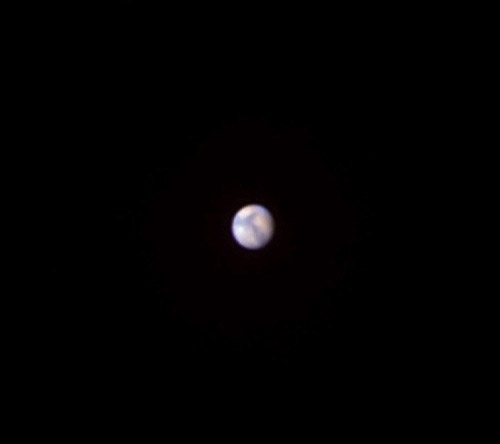 Fig 3: Look at this image from about 10 feet away to see Mars as it might appear in a small telescope in good seeing. Photo credit: faulkes-telescope.com.
Fig 3: Look at this image from about 10 feet away to see Mars as it might appear in a small telescope in good seeing. Photo credit: faulkes-telescope.com.4. Accessories for Observing Mars and Observing Tips
As for eyepieces, again, use what you have. The best eyepieces for observing planets have simple designs with fewer optical elements and a moderate field of view. You don't need $400+ eyepieces to see planets. A good-quality Plossl or Orthoscopic eyepiece will do just fine.
Some other observing tips for seeing Mars:
- Acclimatize Your Telescope. Bring your scope out at least 30-60 minutes before you plan to observe. By cooling it down to the ambient temperature, you'll prevent air currents inside your scope from degrading the image of the planet.
- Pick a Night With Steady Air. Seeing is critical when observing Mars. So pick a night when the air is steady and the stars aren't twinkling too much. Vigorously twinkling stars mean poor seeing, even if the sky is clear. Sometimes, nights with a little haze have steadier air than nights of greater clarity.
- Observe Frequently. Because Mars rotates every 24 hours and 37 minutes, you'll see almost the same face of the planet at the same time each night. So extend your sessions over several hours on one night, or at the same time over the course of a month to see both sides of the planet.
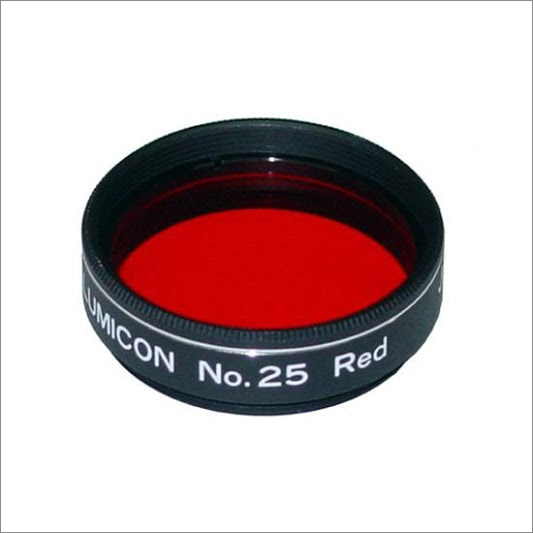 Fig 4: A #25 Wratten filter threaded for a 1.25" eyepiece: an essential filter for observing Mars. Photo credit: Agena AstroProducts.
Fig 4: A #25 Wratten filter threaded for a 1.25" eyepiece: an essential filter for observing Mars. Photo credit: Agena AstroProducts.To get better contrast of the planet's surface, try a few color filters if you have them. Here are some suggested filters for Mars observing sessions:
- Orange (#21 or #23A) increases contrast between light and dark features and penetrates hazes and most clouds. If you pick just one filter for observing Mars, get a #21.
- Yellow (#12, #15) can brighten desert regions and darkens bluish and brownish features.
- Red (#25, #29) gives maximum contrast of surface features, enhances fine surface details, dust clouds boundaries, and polar cap boundaries.
- Green (#56, #58) darkens red and blue features, enhances frost patches, surface fogs, and polar projections
- Blue-Green (#64) helps detect ice-fogs and polar hazes
- Blue (#80A, #38, #38A) and deep blue (#46, #47) shows atmospheric clouds, discrete white clouds, and limb hazes, equatorial cloud bands, polar cloud hoods, and darkens reddish features
- Magenta (#30, #32) will enhance red and blue features and darken green ones, and may improve polar features and some Martian clouds.
(Note: Agena AstroProducts has an excellent summary table that shows which color filters work well with the planets).
Also, to be frank, you need to manage your expectations. No matter how big your scope, Mars won't look anything like images you see the magazines or astronomy websites. In a small telescope, Mars looks tiny and gives up little detail at a glance. Astronomy writer Timothy Ferris wrote of observing the planet, "Observing Mars through a telescope is like watching the Dance of the Seven Veils - seldom are you certain of exactly what you've seen, but it's enough to pique your interest."
The most important tool for observing Mars is patience. Even on Mars' small disk, you can see an astonishing amount of detail if you look carefully, on and off for long periods of time, and wait for fleeing moments of steady air.
5. What To See on the Surface of Mars
The surface of Mars is classified into two types of regions, the lighter red-orange regions covered with rusty dust and the darker regions which are large areas of exposed volcanic rock. During early days of telescopic observation, the light regions were thought to be continents so they were given names that described land masses. Major regions of this type include Elysium Planitia (the Elysium Plain), Arabia Terra (Land of Arabia), the circular Hellas Planitia (Plains of Greece), and Amazonis Planitia (Amazon Plains).
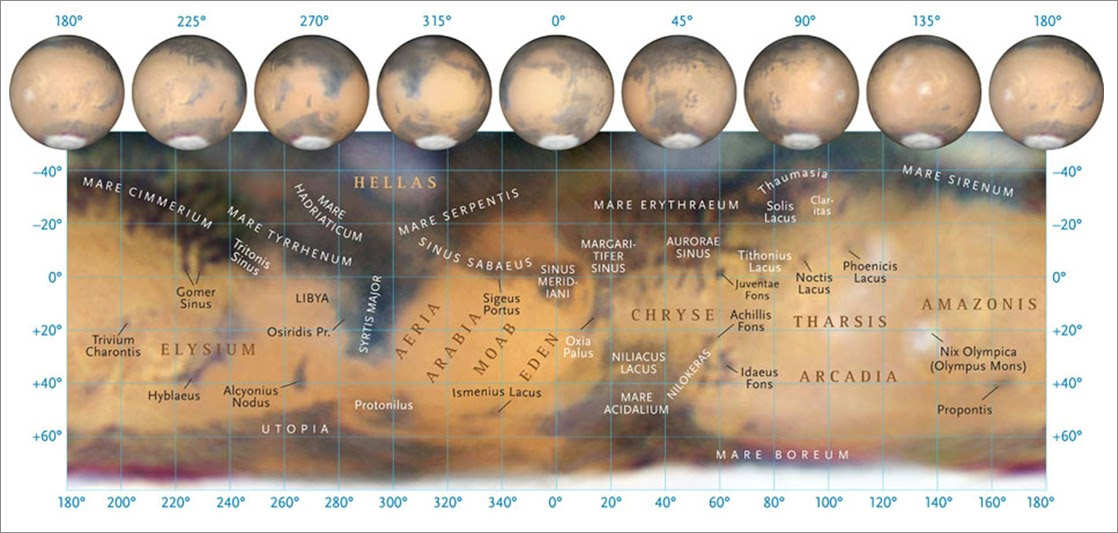 Fig 5: A full-surface map of Mars showing the major regions of the planet visible from Earth. Photo credit: Sky and Telescope.
Fig 5: A full-surface map of Mars showing the major regions of the planet visible from Earth. Photo credit: Sky and Telescope.The darker regions were names after seas, lakes or other watery features. So there is the very large Mare Erythraeum (Arabian Sea) in the south, Mare Acidalium (named after a legendary fountain) in the north, and most strikingly, the large wedge-shaped feature Syrtis Major named after the Gulf of Sidra off the coast of Libya. Syrtis Major is the most obvious dark region on the Martian surface. Many of these dark regions appeared to early telescopic observers to change size during the Martian year. They suspected this was caused by changes in vegetation or rainfall. It turns out the dark regions do not change their dimensions, but instead occasionally are obscured by atmospheric dust. The imaginative 19th-century astronomer Percival Lowell noted the region called Solis Lacus (Lake of the Sun), just south of what we now know to be Valles Marineris, an enormous valley as long as the continential United States, seemed to wax and wane with the seasons. Lowell observed many (illusory) canals converging in this region and speculated it was the capital of the Martian civilization. Solis Lacus is a part of what's now called Solis Planum. Observers often remark that these dark regions appear green. They are not… they are grey-brown and simply appear green because of the contrast with the red-orange surroundings.
In some images of Mars from space or from Earth-based telescopes, whitish features are visible. These are usually cloud formations. They are associated with low-lying regions where clouds collect, or in the vicinity of the peaks of volcanoes where warm air rises up the side of the mountain and condenses into clouds.
The key features to look for on Mars with a small telescope include:
- The arrow-shaped dark region of Syrtis Major
- The southern dark features including Mare Tyrrhenum, Mare Erythraeum, and Mare Sirenum; also look for the circular reddish-orange feature Hellas
- The broad ochre regions of rusty sand marked by Arabia and Eden Terra, Tharsis and Arcadia, Amazonis, and Elysium, all of which are at equatorial and temperate latitudes
- In the north of Mars, look for the dark areas of Utopia Planitia and Mare Acidalium
- And of course look for the polar caps. At a glance, you will immediately see which polar cap is most easily visible
Sky and Telescope magazine has a useful Javascript tool to help you see what is currently visible on the face of Mars, assuming such features are not obscured by a Martian dust storm. You can access the free tool at this link (free registration may be required):
http://www.skyandtelescope.com/wp-content/observing-tools/mars_profiler/mars.html
In this tool, you specify your time of day and date, as well as your preference of view to match your telescope: inverted (like with a Newtonian telescope), mirror reversed (as with an SCT/MCT/refractor with a star diagonal), or direct view (with an erect-image telescope… not a common situation for astronomers). Then this Javascript tool generates a small map to show you what to look for. It also gives you the expected apparent magnitude, diameter (in arc-seconds), and other data. This application also assumes you're observing from Earth's northern hemisphere, where the north pole of Mars points toward the north direction in the sky. If you're in the southern hemisphere, then this image must be inverted again with the controls.
 About the Author
About the Author
Brian Ventrudo is a writer, scientist, and astronomy educator. He received his first telescope at the age of 5 and completed his first university course in astronomy at the age of 12, eventually receiving a master's degree in the subject. He also holds a Ph.D. in engineering physics from McMaster University. During a twenty-year scientific career, he developed laser systems to detect molecules found in interstellar space and planetary atmospheres, and leveraged his expertise to create laser technology for optical communications networks. Since 2008, Brian has taught astronomy to tens of thousands of stargazers through his websites OneMinuteAstronomer.com and CosmicPursuits.com.
***
This article is © AstronomyConnect 2016. All rights reserved.
-
Final Announcement: We're Saying Goodbye to AstronomyConnect. Read Our Closing Notice.
Dismiss Notice
New Cookie Policy
On May 24, 2018, we published revised versions of our Terms and Rules and Cookie Policy. Your use of AstronomyConnect.com’s services is subject to these revised terms.

